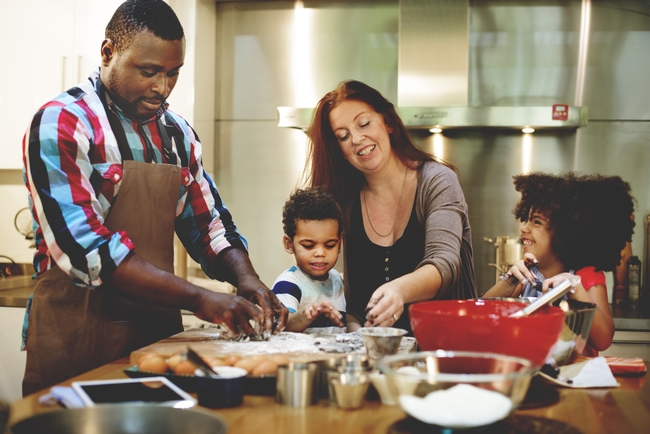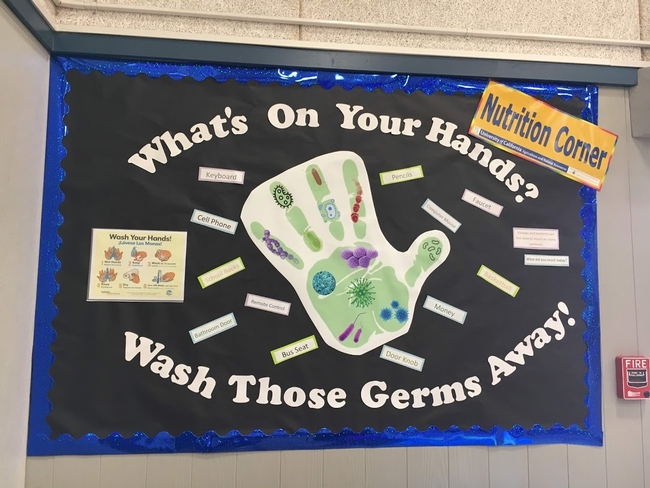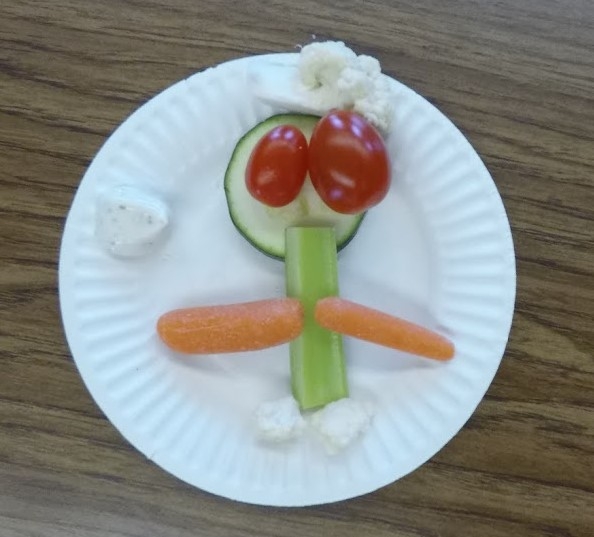Growing up in a traditional Asian Indian household, home cooking was a part of the daily routine and a cultural practice. At the time, acquiring cooking knowledge and skills was an expectation and considered normal. When I moved to the United States, I added new knowledge about diverse cultural values and norms surrounding food and home cooking practices.
Today, with millions of people nationwide facing stay-at-home and social distancing guidelines, home cooking has found new meaning for many families. Navigating through this new normal, I feel blessed to have the cooking knowledge and skills that empower me to cook basic pantry food items into diverse cultural food recipes from across the world. Thanks to my family for keeping the passion of home cooking alive.
As the UC Cooperative Extension nutrition, family, and consumer sciences advisor and a researcher trying to understand and identify strategies to support healthy lifestyle habits among children and families, I feel this commitment has never been stronger than it is right now. I decided to meaningfully inform the ways families can work together with children in the kitchen. In this process, I examined the strategies used by UCCE nutrition education programs of Tulare and Kings counties in the past year, along with current research and best practices that promote home cooking, age-appropriate kitchen tasks, and meal preparation activities.
What is cooking and why it matters?
Cooking is a learned skill that is broadly defined as the ability and capacity to prepare meals. Cooking at home is a practice that encompasses a range of activities to include nutrition and age-appropriate kitchen tasks from food planning, preparation, safety, consumption and much more. Children can acquire cooking skills at home with adult guidance and supervision. There are many benefits of cooking at home.
Cooking at home improves health and well-being
Families that prepare meals at home eat a healthier diet. Studies have reported more fruit and vegetable consumption and low consumption of convenience and processed foods among families who cook at home compared to families who cook irregularly or not at all. A study reported that adolescents with cooking ability indicated better nutritional and mental health and stronger family connections. Among adults, cooking at home has indicated improvements in health status, dietary intake, self-efficacy, self-esteem, mood and affect.
Cooking at home strengthens family resource management
Food resource management involves meal planning, shopping, and budgeting. Studies have shown preparing meals at home saves time and money and helps families eat healthy on a budget.
Cooking at home increases family mealtimes
Having basic cooking skills set the foundation for family mealtimes. Research shows when families cook at home, they are more likely to eat at home most days of the week, make healthier food choices, and save money.
Cooking at home promotes family cultural tradition
Families pass on their cultural tradition when they include children in every aspect of the meal preparation, from choosing the food menu and ingredients, to setting the table to making the meal, talking and eating together. Research shows such practices may differ from family to family, however, it creates lifelong knowledge and memories.
Cooking at home contributes to lifelong healthy habits and life skills
Cooking together as a family helps children learn useful life skills of reading, teamwork, planning and organization, communication, problem-solving, creativity, imagination, cleanliness, and gratitude. Children can apply math, science, nutrition, culinary, and geography lessons to understand where the food comes from, how to read a recipe, how to measure ingredients, healthy vs. unhealthy foods, foods from around the world, seasonal foods, nutrition aspects of the food and much more.
Promoting healthy families and communities through UC Cooperative Extension
The University of California Cooperative Extension administers CalFresh Healthy Living, UC and the Expanded Food & Nutrition Education Program in Tulare and Kings counties
Funded by the U.S. Department of Agriculture, nutrition education is an integral component of these programs. Increasingly in recent years, there is a focus on improving lifelong practical skills using age-appropriate learning approaches.
In the past year, the UCCE nutrition programs in Tulare and Kings counties have empowered children, youth, adults, and families with knowledge and skills to make the healthy choice the easy choice.
Participants learned about handwashing and food safety, age-appropriate cooking basics, growing a vegetable garden, reading a recipe, eating healthy from five food groups, healthy and seasonal foods. Through food demonstrations and taste tests, participants enjoyed foods from all food groups, including new fruits and vegetables, and showed a willingness to try them at home.
Additionally, adult learning also included food planning and management, selection, preparation, cooking, and eating on a budget.
How can families engage children in age-appropriate home cooking activities?
Now is the time to create family home cooking memories with love and gratitude
Try a few of the activities listed below, and set goals to adopt small healthy living changes. Soon, you'll be proud and happy to see your children pick up these skills and habits.
Age-appropriate kitchen tasks. Children are great helpers. Parents can delegate and guide children with Age-Appropriate Kitchen Tasks . Age-appropriate tasks are recommended based on what children can do at each age. Effective parental practices can help children stay healthy and safe (Child Development Milestones & Parenting).
Cooking appliances, tools and accessories.Be a kitchen tour guide to your children and help them get to know the kitchen layout and appliances. Show them cooking tools and accessories that you frequently use in the kitchen. Provide age-appropriate cooking tools to encourage children to get involved in the kitchen.
Handwashing. Help children understand the importance of washing hands before, during, and after handling food, cooking, and eating. Help children develop handwashing habits by following Five Steps to Handwashing. Handwashing can be a fun family activity.
Food safety. Explain to children the science behind food handling, cooking, and storage using guidelines about Food Safety in Your Kitchen and Food Safety Fun Learning Family Activities. To get guidance on safe handling, preparation, and storage of food and beverage items, download Foodkeeper App.
Food menu planning. Involve children in Food Planning Activities & Resources. Create a Sample Two-Week Menuto minimize trips to grocery stores. Ask children to help you create a family food menu. During grocery shopping, fill your cart with healthy options and consider shelf-stable and budget-friendly items from each food group with Food Groups Tip for Every Aisle.
Cooking with new foods, herbs and spices.Walk the talk about the importance of eating from five food groups and drinking water instead of sugar-sweetened beverages by doing so yourself. When creating a food menu and food recipes, include foods from five food groups - fruits, vegetables, proteins, grains and dairy from MyPlate and Seasonal Produce Guide. Add flavor to your food with Herbs & Spices. You can also Grow Your Own Herbs & Spices Indoors .
Food recipe cookbooks. Involve children in creating healthy food recipe cookbooks for breakfast, snacks, lunch, appetizers, and dinner. Think about building traditional family food recipes, food recipes from around the world or by culture, quick and easy food recipes, cooking with herbs, slow-cooker recipes, and much more. Family friendly recipe ideas can be found at MyPlate Kitchen, Healthy Recipes from the Whitehouse to You, Meeting Your MyPlate Goals On A Budget, Healthy Eating on a Budget Cookbook.
Food demonstration and taste test. Food demonstration and taste test can be a fun family kitchen activity during weekends. Encourage children to create a fun recipe to cook, and ask them to use their five senses to describe the flavors, ingredients and the food used in the recipe. Try to blend the food from many cultures to create new recipes. Share family food stories with children to keep the family tradition alive.
Family mealtimes. Family mealtime is an opportunity to eat, talk, connect, communicate, and learn. Visit MyPlatePlan to learn what and how much to eat within calorie allowance. Eating together as a family gives the children an opportunity to learn and practice their table manners, social and communication skills.
Reduce food waste. Family meal preparation time is a great opportunity to educate children about how to Recycle & Compost food waste. Recycling food helps save money and reduces the amount of food going to waste.
Food- and kitchen-related COVID-19 informational resources.The USDA Food and Nutrition Service and the Academy of Nutrition and Dietetics has useful nutrition and food safety tips and activities for families managing the challenging conditions of the COVID-19 outbreak. Find these organizations here:


